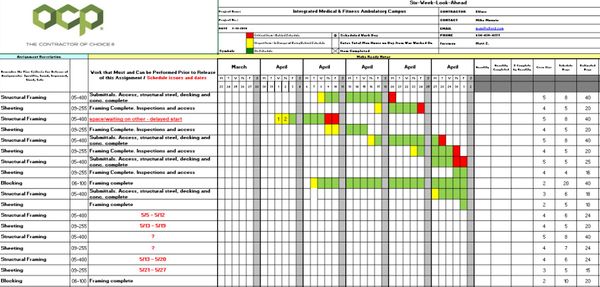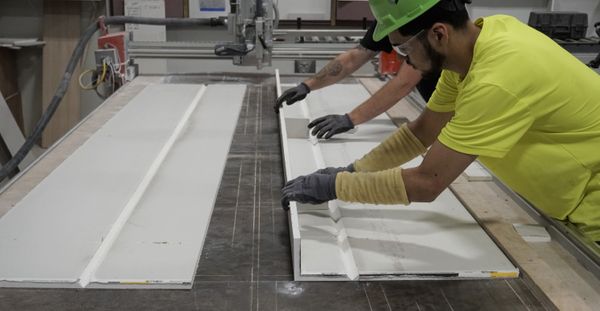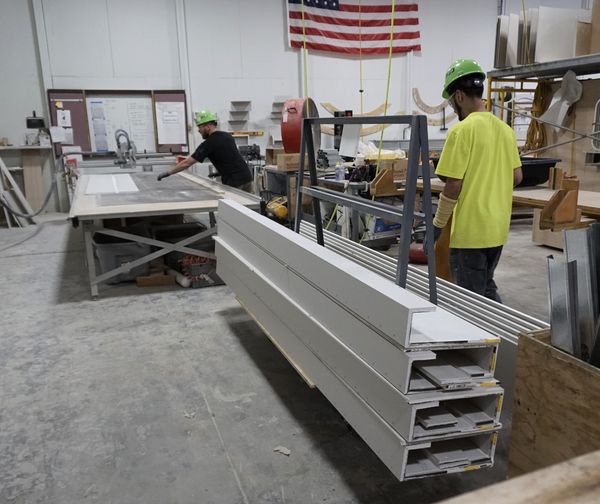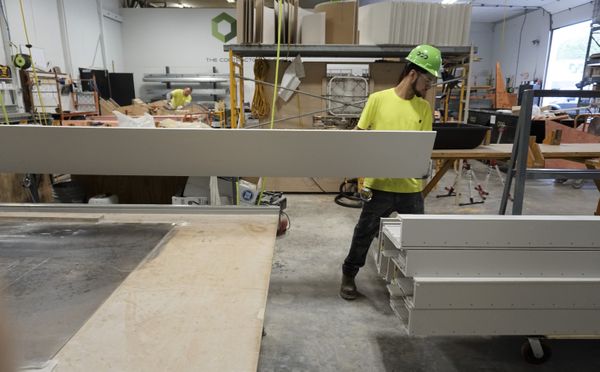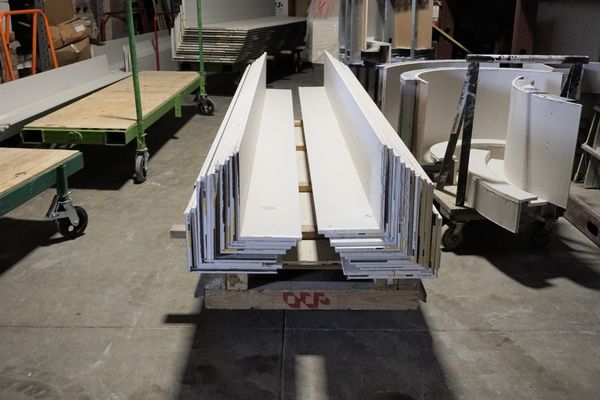Using Lean Construction to cut out construction waste
Lean construction is a collaborative approach to minimizing wasted time, effort, and materials in order to bring maximum value to the client. OCP Contractors is a leader in the industry with lean construction concepts and has implemented these concepts in the field since 2008. OCP is always looking for ways to optimize the project, not the pieces.
By being a part of the project team early on, OCP’s team of experts can help contribute new ideas before designs and plans are set in stone by the architect and Owner.
Lean Construction as a Core Business Value
Lean construction is at the heart of OCP's core beliefs to innovate the construction process for the betterment of the industry, and the company has been integrating lean construction practices for the past 12 years. OCP has adopted successful practices and standardized them across all job sites to establish how an OCP lean project should function.
In 2019, OCP "Doubled Down" on new lean initiatives and streamlined these initiatives across all of the OCP offices and job sites. OCP hired a Lean Consultant to help implement the process and hold the team accountable. Within the organization, OCP has a "Lean Team" with Seven Lean Subcommittees that meet monthly to discuss implementing new methods and making sure all lean concepts are understood and followed.
There are fundamental lean construction principles that direct the methods and processes of firms to aid in achieving a successfully completed lean project:
Identify Value as Defined by the Customer
The collective parts of a construction project including the owner, architect, engineers, general contractor, subcontractors, and suppliers are brought together to develop a detailed definition of what the customer values (and why) in order to create processes in accordance with achieving these values.
Develop the Value Stream
Detailed processes are put in place to define how the end project will be achieved in line with the customer’s defined values. Resources or steps that do not contribute to the value of the project are eliminated.
Eliminate the Key Types of Waste
Each process in the project is evaluated to understand how the process can be simplified to minimize or completely reduce waste. Teams often study the following areas to perfect processes: defects that could possibly cause reworks, overproduction that could lead to schedule conflicts, idle time waiting for materials or work, underutilized workforce talent, transportation methods, excessive inventory on-site, unnecessary movement expenditures, and over-processing/complicating a process.
Work Process Flow
Lean construction aims to create a continuous, uninterrupted workflow to provide the project with reliable and predictable metrics. Communication between trades is essential to achieving a continuous flow of work processes.
Pull Planning and Scheduling
Contractors work closely with one another and communicate where they are in accordance with the schedule in order to make changes to allow continuous flow to be maintained.
Prefabrication
By delivering materials pre-cut and ready for installation, the occurrence of idle time is minimized while also contributing to safety due to the reduced need for equipment on-site.
Consistent Innovation and Improvement
Teams should be consistently identifying and researching methods to perfect processes and reduce waste. When new opportunities for waste reduction are presented, they should be acted upon and integrated into future processes.
Through lean practices, OCP is able to share project knowledge, and experience with the entire project team to develop improved processes and ensure a reliable workflow with predictable project outcomes. Actions are coordinated in a continuous flow to ensure that resources and time are utilized to their full potential. In addition, technologies and methods such as BIM, Total Station, the Plexxis ERP System, and prefabrication are utilized to provide clients with a high-quality end product.
Furthermore, practices such as "everything on wheels," "nothing hits the floor," and cordless equipment ensure that tradespeople do not have wasted movement on the job and are fully equipped to perform at a high level.

